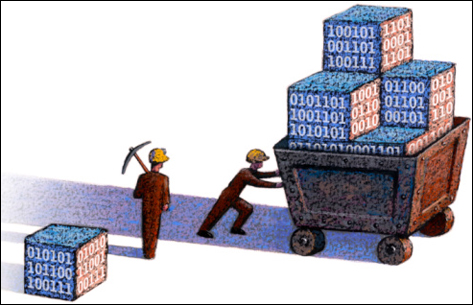Founder and CEO of TRG Arts, Rick Lester recently visited Carnegie Mellon University to discuss the implications of "big data" on arts organizations across the country. Afterward Rick sat down with Technology in the Arts to share insights on current trends in patron behavior, suggestions for new or under-resourced ventures, and desired skills for emerging arts managers.
We started by talking about subscriptions, patron loyalty, and generational differences. New times have brought new challenges; new technology has created new opportunities. The one constant in developing patron loyalty, Rick notes, "is that it's still not easy--but it can be done, and it can be done very profitably." Data sharing across organizations, enabled by new data collection techniques like TRG's Community Database Programs, reveals arts organizations to inhabit a cultural ecosystem in which collaboration among "competitors" overwhelmingly results in benefits to all in the long run.
Of course, for such data sharing to work, arts organizations of all sizes must actually collect information about the people they serve. Rick advises even the smallest and most under-resourced of organizations to collect, at a minimum, the name, mailing address, phone number, and email for every individual that walks through the door, noting that many young nonprofits fail to do even that. "There are a surprising number of small organizations that only collect email addresses," he explains. "An email addresses can't be matched up to anything. It can't be matched up to a human being, and from our point of view, most importantly it can't be matched up to a snail mail address. And it's that snail mail address that provides the gateway into the thousands and thousands of demographic and psychographic attributes. But even before we get to that, if I don't have a snail mail address, I can't match you up with your other transactions around town."
Rick Lester, Founder & CEO of TRG Arts
Collecting that basic data for each patron allows even a small arts organization not only to utilize multiple communication channels to build loyalty, but also to analyze which channels produce optimal results for which patrons. With that knowledge in hand, campaigns can be more efficiently targeted and resources can be more profitably allocated.
As we move into an age of big data, and the powerful potential that it holds, Rick reminds us also of its limitations. "Data is nothing more than a rearview mirror, and what's in that rearview mirror is limited by the decisions that we've made. It can only predict the re-occurrence of things that have already happened." Rather than be stifled by those limitations, he actually finds them liberating. While data can empower organizations to behave more efficiently, they likewise reinforce the power of creativity. Originality cannot be foretold. Nor can the public's response to innovation. If anything, Rick has found the use of data to embolden organizations to produce new works. From providing figures with which realistic budgets can be forecast to revealing higher retention rates for first-time attendees of mixed repertoire performances, data positions arts organizations to better carry out their missions. "By and large, the artistic directors with whom we work feel a greater sense of freedom to do what they feel called to do," Rick reports. For the arts world, spurring the creative process forward may turn out to be the greatest power big data holds.



